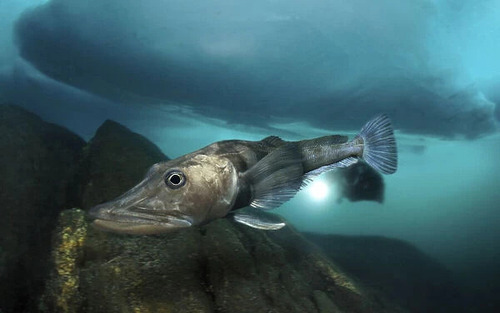When we think of body temperature, we often associate it with warmth and vitality. However, certain animals thrive in extreme environments, exhibiting remarkably low body temperatures. This article explores the animal with the lowest body temperature, examining its adaptations and the significance of such extreme traits in the animal kingdom.
The Antarctic icefish, belonging to the family Channichthyidae, is widely recognized as the animal with the lowest body temperature. These unique fish can survive in the icy waters of Antarctica, where temperatures can drop to -2°C (28°F). Interestingly, their body temperature can match that of their surroundings, making them one of the coldest-blooded vertebrates on the planet.
Antifreeze Glycoproteins: Icefish have evolved specialized proteins in their blood that prevent ice crystal formation, allowing them to thrive in subzero temperatures.
Lack of Hemoglobin: Unlike most fish, icefish have clear blood due to the absence of hemoglobin, the protein responsible for transporting oxygen. Instead, they absorb oxygen directly from the water through their skin and tissues.
The Antarctic icefish is not just a marvel of cold adaptation; it also plays a crucial role in its ecosystem. By occupying a niche in the food web, it contributes to the balance of marine life in one of the planet's harshest environments.
Prey for Other Species: Icefish serve as a vital food source for larger predators, including seals and penguins.
Ecosystem Health: Their presence indicates a healthy, functioning ecosystem, as they are sensitive to changes in their environment.

While the Antarctic icefish holds the title for the lowest body temperature, several other cold-blooded animals can withstand low temperatures, demonstrating remarkable adaptations to survive in frigid habitats.
The Arctic cod (Boreogadus saida) is another fish that thrives in icy waters. It can withstand temperatures as low as -1.8°C (28.8°F) thanks to antifreeze proteins in its blood.

The wood frog (Lithobates sylvaticus) can survive being frozen solid during winter. Its body temperature can drop to -6°C (21°F), and it can remain in a frozen state for months, only to thaw and resume normal functions when temperatures rise.

Often called "water bears," tardigrades are microscopic animals known for their extreme resilience. They can enter a cryptobiotic state, allowing their body temperature to drop significantly. Although they can survive extreme cold, their exact body temperature in this state is difficult to measure.

Animals that thrive in cold environments exhibit fascinating biological adaptations that allow them to survive extreme temperatures. These adaptations often include physiological changes, such as altered blood chemistry and metabolic processes, to maintain functionality at low temperatures.
Metabolic Rate: Many cold-adapted species have lower metabolic rates, reducing their energy needs in frigid conditions.
Cellular Protection: Proteins and membranes in cold-tolerant species are adapted to maintain fluidity, preventing cellular damage in extreme cold.
The Antarctic icefish stands out as a remarkable example of life in extreme conditions, possessing the lowest body temperature of any known animal. Its unique adaptations, such as antifreeze proteins and hemoglobin-free blood, enable it to thrive in the icy waters of Antarctica. Additionally, other cold-blooded creatures like the Arctic cod and wood frog exhibit extraordinary resilience to low temperatures, showcasing the diverse strategies life employs to survive in harsh environments. Understanding these adaptations deepens our appreciation for biodiversity and the incredible ways life can persist in even the most inhospitable habitats on Earth.
animal tags: cold-adapted
We created this article in conjunction with AI technology, then made sure it was fact-checked and edited by a Animals Top editor.